Use this tried-and-tested acronym to help students correctly answer equation-based questions
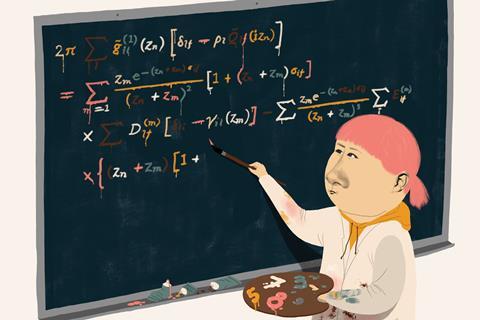
Solving problems that involve equations is an important skill across all three disciplines of science. There are many variables involved: recalling the correct equation, converting units, rearranging, answering problems that involve more than one equation and using standard form, to name a few.
Troublesome triangles
Formula triangles are like that friend who always wants to help but just complicates things. Because solving equation-based problems is such a vital skill, it’s better to avoid using formula triangles. For example, formula triangles don’t teach students to rearrange equations mathematically. They’re no easier to remember than the actual equations; they can lower expectations by maintaining scaffolding that prevents students from gaining independence; and they don’t work well with complex equations such as Ek = ½mv².
Like David Wait shared in his opinion piece, we think formula triangles are like that friend who always wants to help but just complicates things (rsc.li/3Vq5YNn). Because solving equation-based problems is such a vital skill, it’s better to avoid using formula triangles. For example, formula triangles don’t teach students to rearrange equations mathematically. They’re no easier to remember than the actual equations; they can lower expectations by maintaining scaffolding that prevents students from gaining independence; and they don’t work well with complex equations such as Ek = ½mv².
Choosing an acronym
The battle of the acronyms
There are many approaches to solving equations, such as FIFA (Formula, Insert values, Fine tune, Answer) and EVERY (Equation, Values, Enter values, Result, Yoonits). But our sanity-saving way of helping students tackle equation-based questions is GUESS.
Given: what values are in the question? What quantity do you need to calculate?
Units: do the units need converting?
Equation: what equation do you need?
Substitute: put the values into the equation.
Solve: rearrange if necessary. Enter the values into your calculator and check your final answer. Does it need to be in standard form? How many significant figures do you need?
While other acronyms are better than triangles, they just do not work as well as GUESS with our students. For example, some find the ‘fine tune’ step of FIFA too vague. The GUESS method gives learners a handy checklist to glean key information from exam questions, ensure their units are on point, pick the right equation, rearrange it easily if needed and double-check their answers.
Are you more of a FIFA fan? Want to learn about the alternative acronym or maths anxiety? Read how to use the scaffold to help improve your learners’ numeracy confidence.
Independent practice
Students are doin’ it for themselves
As the Eurythmics didn’t quite sing, ‘Students are doin’ it for themselves’. GUESS helps 11–16 students learn to practice independently and effectively across all three sciences, whether it’s simple equations or more advanced ones such as magnification calculations in biology or percentage yields in chemistry.
Overdo the theatrics when starting GUESS and try to create a buzz about doing maths in science. Remind learners, it’s good to GUESS. Here are some of our tried-and-tested methods. Why not give them a go?
Display an equation-based problem on your board (table 1). Discuss the meaning of each step in GUESS and check for understanding. Go through several worked examples, perhaps with a visualiser or graphics tablet. Use mini whiteboards for students to practise scaffolded questions. Then set independent practice questions on the board or a worksheet – learners can answer on the latter or in their exercise books, with GUESS written down the margin.
| G |
V = 500 cm3 m = ? c = 0.4 g dm-3 |
|---|---|
| U |
V = 500 cm3 / 1000 = 0.5 dm3 |
| E |
Concentration = mass / volume |
| S |
0.4 g dm-3 = m / 0.5 dm3 |
| S |
0.4 x 0.5 = m 0.2 = m 0.2 g = mass |
Then give the answers, with students self-assessing their work or showing their answers under a visualiser, and mark as a class. Repeat the steps for different areas of focus, such as examples involving only unit conversions, only rearranging equations, or both. Increase difficulty as the questions progress (such as in table 2). Finally, get them to apply the method to exam questions.
| Calculate the concentration in g dm-3 of a solution that has 4 g of NaCl dissolved in 2 dm3 of water. | Calculate the concentration in g dm-3 of a solution that has 3.4 g of copper sulfate dissolved in 1500 cm3 of water. | Calculate the concentration in g dm-3 of a solution that has 2.7 g of copper sulfate dissolved in 500 cm3 of water. | Calculate the concentration in g dm-3 of a solution that has 5.6 g of copper sulfate dissolved in 2200 cm3 of water. | |
|---|---|---|---|---|
| G |
V = 2 dm3 m = 4 g c = ? |
V = 1500 cm3 m = 3.4 g c = ? |
V = 500 cm3 m = 2.7 g c = ? |
|
| U |
:) |
V = 1500 cm3 / 1000 = 1.5 dm3 |
||
| E |
Concentration = mass / volume |
Concentration = mass / volume |
||
| S |
Concentration = 4 g / 2 dm3 |
|||
| S |
Concentration = 2 g dm-3 |
Colleague collaboration
It’s also vital to get buy-in from colleagues to ensure departmental consistency. The best way to achieve this is to explain the benefits to them versus the disadvantages of, say, formula triangles and listen to their feedback. Regularly discuss the approach, sharing examples from across the department and meeting with your colleagues in the maths department. Collaborate so there is consistency in methods and awareness of the differences in the subjects. Then all parties need to invest time in embedding these techniques effectively.
GUESS isn’t perfect. Other methods tend to be better for problems such as titrations and more complex mole calculations. The main thing is to highlight these areas and ensure that students know what to use instead.
It’s also vital to get buy-in from colleagues to ensure departmental consistency. The best way to achieve this is to explain the benefits to them versus the disadvantages of, say, formula triangles and listen to their feedback. Regularly discuss the approach, sharing examples from across the department and meeting with your colleagues in the maths department. Read this article for tips on collaborating so there is consistency in methods and awareness of the differences in the subjects (rsc.li/3XFWa3i). Then all parties need to invest time in embedding these techniques effectively.
GUESS isn’t perfect. Other methods tend to be better for problems such as titrations and more complex mole calculations. The main thing is to highlight these areas and ensure that students know what to use instead.
However, sometimes you need to guess a few times when a problem involves multiple equations – and this acronym is a powerful tool that has made a massive impact with our students. So, ditch the triangles and find success with GUESS.
Article updated on 13 February 2025 to correct a unit in table 1.
Dan Beech and Paul Hesford
Are you more of a FIFA fan? Want to learn about the alternative acronym or maths anxiety? Go back a page.


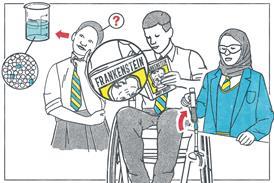
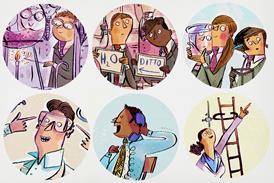



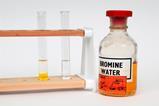

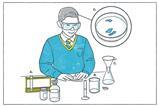






1 Reader's comment